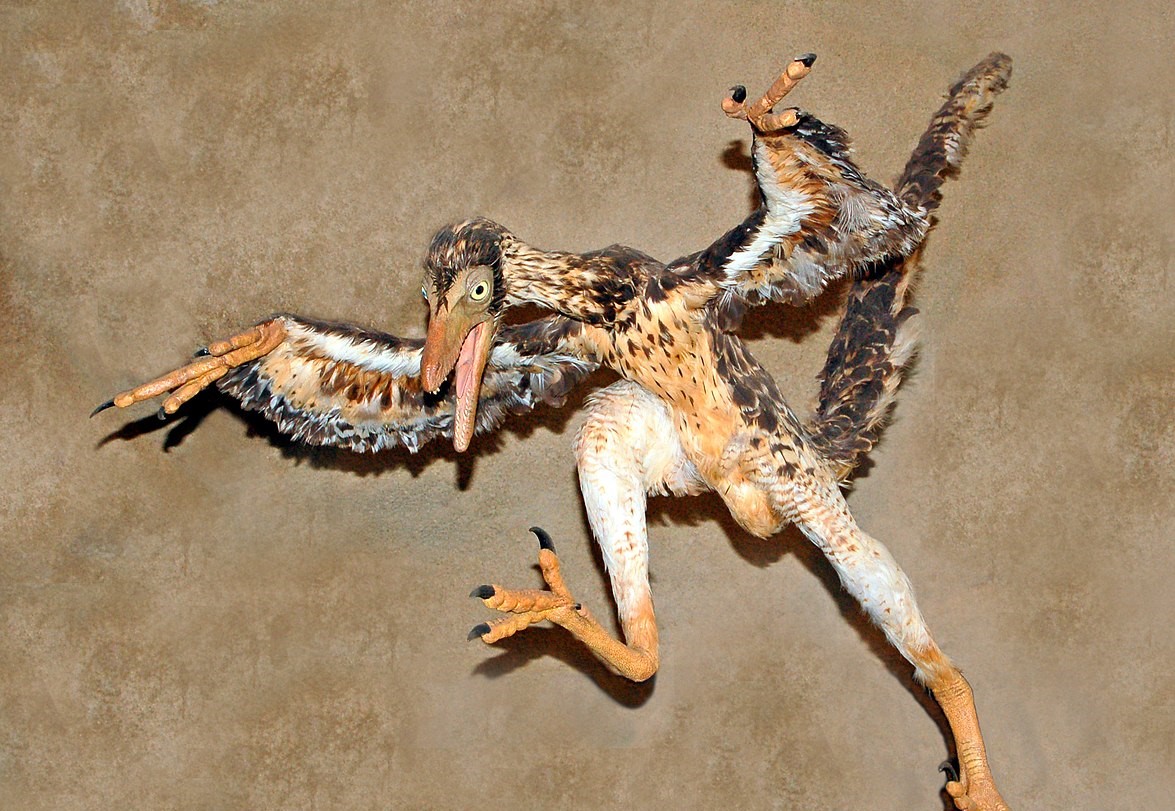
A recent X-ray analysis has unveiled a surprising connection between the chemical structure of feathers of today’s birds and those of dinosaurs from the past. It turns out that these feathers have a lot more in common than we once believed, particularly in terms of their protein makeup.
This revelation provides us with fresh knowledge about how feathers have evolved over an incredibly long span of time—over hundreds of millions of years.
Feathers from Dinosaurs
In a study published in the journal Nature Ecology and Evolution, paleontologists carefully studied feathers from three ancient creatures. These creatures include a non-avian dinosaur called Sinornithosaurus, which lived around 125 million years ago in China.
They also looked at an early bird from the same time and place, called Confuciusornis. Additionally, they examined feathers from an unknown species that existed roughly fifty million years ago in what is now the Green River Formation in Wyoming.
Presence of certain proteins in the feathers
Following thorough examinations using X-ray and infrared light, the scientists found something intriguing in the chemical structure of the feathers. They identified the presence of something called corneous beta-proteins (CBPs), which were once known as beta-keratins. These proteins play a crucial role in making feathers strong and suitable enough for flying.
To compare, the researchers also looked at feathers from modern-day birds, such as zebra finches (scientifically known as Taeniopygia). What they observed was that these contemporary feathers shared a comparable chemical structure with the ancient ones.
Tiffany Slater, the lead author of the study and a postdoctoral researcher specializing in paleobiology at the University College Cork in Ireland, pointed out, “These same beta proteins are also present in modern bird feathers.”
Different types of proteins in the feathers
Before this study, scientists believed that the feathers of ancient animals had a vastly different protein makeup, mainly consisting of alpha proteins. These alpha proteins are not as robust as the corneous beta-proteins (CBPs) mentioned earlier.
However, this new research has unveiled a surprising twist. It turns out that not only were the ancient feathers primarily composed of CBPs, but these CBPs transformed into alpha proteins during the fossilization process.
This fresh perspective not only demonstrates that proteins can endure and remain preserved in fossils for an astounding period of over 125 million years, but it also reshapes our understanding of how ancient feathers evolved.
#FossilFriday is my cue to (again 😇) share this gorgeous summary by @GraphicsSci of our new paper on fossil proteins in #dinosaur feathers 🪶🦖@NatureEcoEvo @MariaMcN_palaeo
Spoiler🚨The chemistry of modern feathers is ANCIENT!
Seriously. Check out that bird.. 👁️👁️⤵️ (1/n) pic.twitter.com/bbGHhZ9n6b
— Dr Tiffany Slater (@_Tiffany_Slater) September 22, 2023
It extends the perception of the time frames involved in the evolution of these ancient feathers beyond what scientists previously believed.
Tiffany Slater remarked, “The chemistry of modern-day feathers is actually a lot more ancient than we previously thought.”
She further added, “Our research helps rewrite the narrative and shows that the very basic building blocks that are required for powered flight were present at least 125 million years ago.”
See all the latest news from Greece and the world at Greekreporter.com. Contact our newsroom to report an update or send your story, photos and videos. Follow GR on Google News and subscribe here to our daily email!



